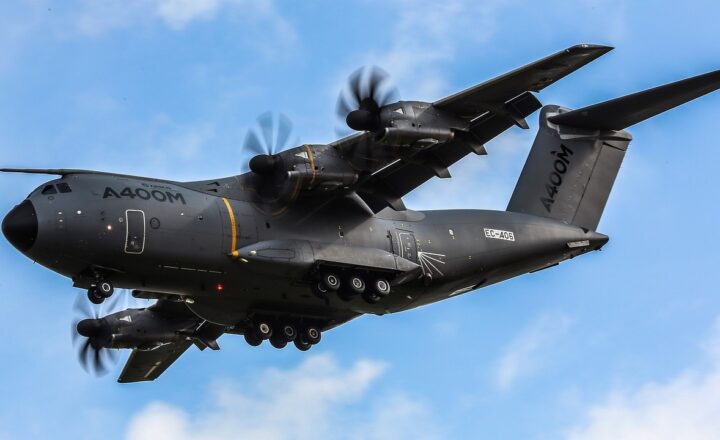The Most Advanced Military Robots Ever Created and How They’re Deployed
November 11, 2024

In recent decades, military technology has rapidly evolved, and one of the most significant advancements has been in the realm of robotics. Military robots are now at the forefront of warfare, providing enhanced operational capabilities, reducing human casualties, and increasing efficiency in various tasks. This article delves into some of the most advanced military robots ever created and explores how they are deployed in modern combat scenarios.
1. The Evolution of Military Robots
The concept of military robots isn’t entirely new; however, the technology and capabilities of these machines have drastically changed since their inception. Initially, military robots were simple remote-controlled devices designed for bomb disposal. Today, advancements in artificial intelligence (AI), machine learning, and sensor integration have given rise to autonomous systems that can make independent decisions on the battlefield.
From the early days of unmanned aerial vehicles (UAVs) to advanced land drones and even robotic combat vehicles, the evolution of military robots can be categorized into several noteworthy types:
- Land Robots: Ground-based robots designed for various functions including reconnaissance, logistics, and combat support. Examples include the PackBot and the Talon robots that provide tactical support to soldiers in the field.
- Aerial Drones: UAVs such as the MQ-9 Reaper, used for surveillance, reconnaissance, and targeted strikes, have revolutionized how military operations are conducted. They allow for high-altitude observation without manned aircraft risk.
- Maritime Robots: Unmanned underwater vehicles (UUVs) like the SeaFox and autonomous surface vessels are used for naval reconnaissance and to neutralize underwater threats such as mines.
As technology progresses, these robots are designed to be faster, more efficient, and equipped with sophisticated sensors, cameras, and weapons systems.
2. Notable Examples of Advanced Military Robots
Several military robots stand out for their advanced technology and unique capabilities. Here are some examples that have made a significant impact:
2.1. Boston Dynamics’ Spot
Spot is a groundbreaking quadruped robot that can navigate various terrains, making it invaluable for military applications. It is equipped with a variety of sensors and can be deployed for reconnaissance missions, supply delivery, and even as a weaponized platform in certain scenarios. Its agility allows it to traverse obstacles and operate in environments hazardous to humans.
2.2. Robotic Combat Vehicles (RCVs)
Advanced RCVs like the MAARS (Modular Advanced Armed Robotic System) are designed to support troops in combat. They can be equipped with a variety of payloads, including machine guns and grenade launchers, and operated remotely, allowing for direct fire without risking soldiers’ lives. These systems can autonomously navigate battlefields, assess threats, and perform reconnaissance.
2.3. DRDO’s Daksh
The Daksh robot, developed by the Defence Research and Development Organisation in India, is specifically designed for bomb disposal. Equipped with cameras and robotic arms, it can safely neutralize explosive devices, ensuring the safety of human operators. This robot highlights the increasing emphasis on safety and risk reduction in military operations.
2.4. X-47B Unmanned Combat Air Vehicle
The Northrop Grumman X-47B is a cutting-edge UAV designed for carrier operations. It features advanced stealth capabilities, autonomous flight control, and the ability to conduct refueling missions. The X-47B symbolizes the future of unmanned combat aviation, enabling naval forces to conduct operations without putting pilots at risk.
3. How Military Robots are Deployed
The deployment of military robots is a strategic decision influenced by the nature of the mission, available resources, and environmental considerations. Here are some general applications of military robots in field operations:
3.1. Surveillance and Reconnaissance
Many military robots are used for gathering intelligence and providing real-time situational awareness. With capabilities like high-definition cameras, thermal imaging, and motion detection, these robots can monitor enemy movements and track changes in environmental conditions without placing human lives at risk.
3.2. Logistics and Supply Delivery
Robots are increasingly employed to transport supplies and equipment. The operational efficiency gained through automation helps reduce the workload on soldiers and ensures that critical supplies reach frontline troops promptly. Additionally, robots can traverse hazardous areas where human transport would be dangerous.
3.3. Combat Support
In combat zones, military robots can offer direct support by engaging in combat operations. Armed drones and RCVs are capable of providing fire support, performing coordinated strikes, and suppressing enemy positions while minimizing risk to human soldiers. Their precision and accuracy help enhance mission effectiveness while lowering collateral damage.
3.4. Search and Rescue Operations
Military robots are also deployed in humanitarian missions, particularly in search and rescue operations following natural disasters or conflicts. They are used to locate survivors, assess structural damage, and deliver essential supplies to inaccessible areas.
4. The Future of Military Robotics
As the landscape of warfare continues to change, so too does the role of military robots. The integration of AI and advanced algorithms aims to create fully autonomous systems capable of decision-making in high-stress environments. Here are some trends to watch for in the future:
- Enhanced Autonomy: Military robots will increasingly operate with greater independence, capable of executing complex missions with minimal human intervention, significantly reducing response times in critical situations.
- Swarm Robotics: Future developments may focus on swarm technology, where multiple robots work together to achieve missions, coordinating their actions for greater operational efficiency and effectiveness.
- Better Human-Robot Interaction: Enhanced communication between human operators and robots, involving intuitive control systems, will allow for more seamless integration of robotic systems in military operations.
- Increased Use of AI: The application of AI will be paramount in enhancing robots’ capabilities in threat recognition, data analysis, and operational strategy development.
Conclusion
Military robots represent the cutting edge of modern warfare technology. Their ability to assist in reconnaissance, provide logistical support, and engage in combat operations while reducing the risk to human lives is revolutionizing military strategies around the globe. As developments in AI and robotics continue to advance, we can expect these machines to play an even more significant role in the future of combat and peacekeeping missions.
By understanding the capabilities and deployments of military robots today, we not only grasp technological advancements but also the ethical discussions surrounding their use in warfare. The future of military robotics holds limitless potential, but it is up to society and military leaders to ensure they are used responsibly and effectively.







